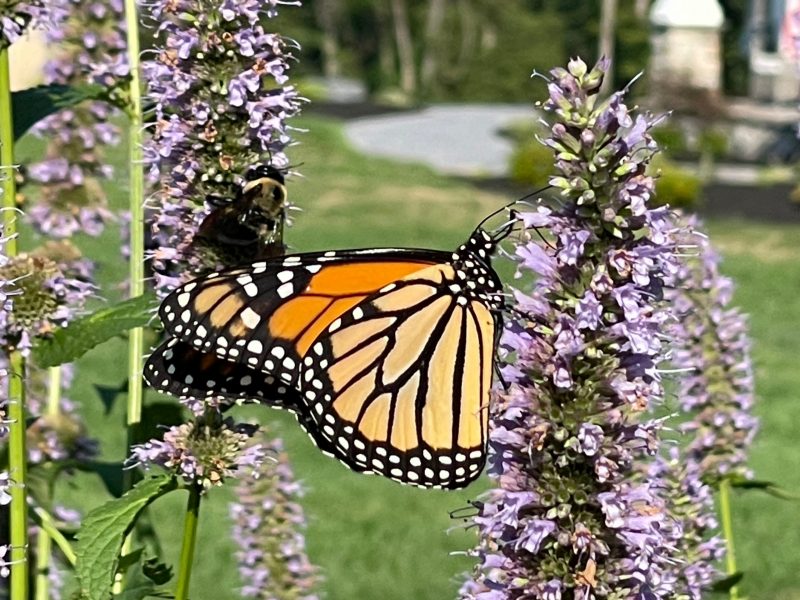
Monarch butterflies are becoming endangered. While the U.S. Fish and Wildlife Service has not yet added the monarch to their endangered species list, the International Union for Conservation and Nature added monarchs to their Red List of endangered species on July 21, 2022. The biggest threats to monarchs are loss of habitat, climate change and pesticide use. But monarchs also have to contend with predators, which can kill up to 95% of monarch larvae. To give more monarchs a fighting chance, you can collect their eggs or the caterpillars and foster them until they’re ready to be released as butterflies.
My mother, Sharon Kizer, has been fostering monarch butterflies for years. Through the help of websites such as Monarch Watch and other members of her community who also raise monarchs, she has learned a lot about how to give monarchs their best shot at reaching adulthood. Here, she shares some instructions on how to successfully help monarchs grow from egg to butterfly.
How to collect monarch eggs and caterpillars
The first step in starting your own monarch farm is to collect monarch eggs or caterpillars. One butterfly can lay 300 to 500 eggs. But the yellowish eggs are so tiny – the size of the tip of a pencil – that they can be hard to spot. It’s much easier to find the caterpillar already hatched.
Whether you’re looking for the egg or the caterpillar, there’s only one place to find them, and that’s on milkweed. Caterpillars only eat milkweed. You’ll find the eggs stuck to the underside of milkweed leaves. And you’ll find caterpillars there, too. It’s easier to spot the caterpillars, not only because they’re larger, but because you can look for leaves that have holes, indicating a nearby, hungry caterpillar.
Recently, Sharon got a call from a farmer to come collect caterpillars from the milkweed in a field on his farm. With the help of his three young granddaughters, they collected 60 caterpillars in one night, including some just hatched that were barely bigger than the egg.
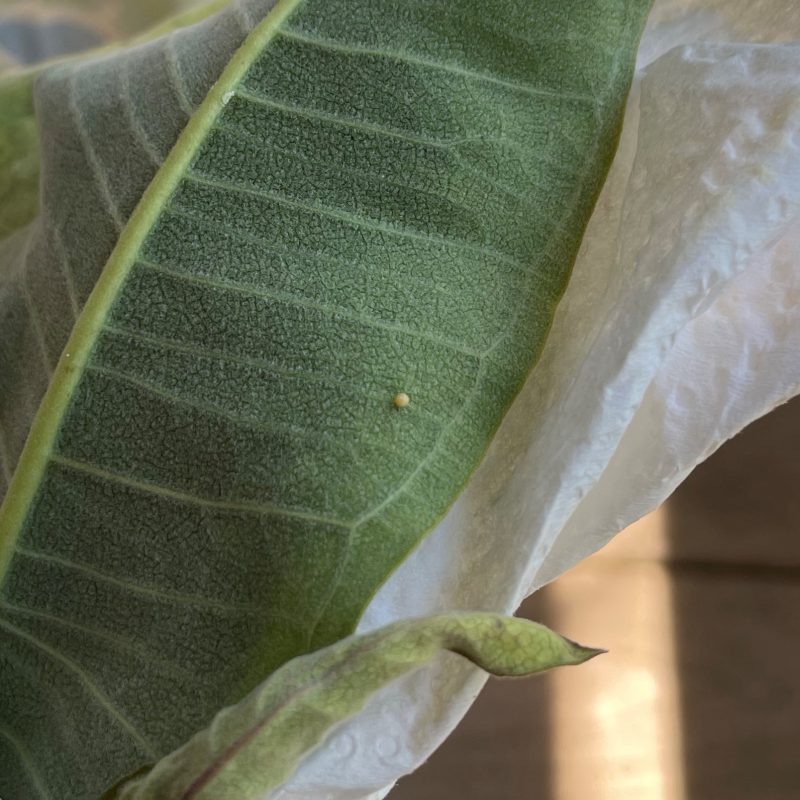
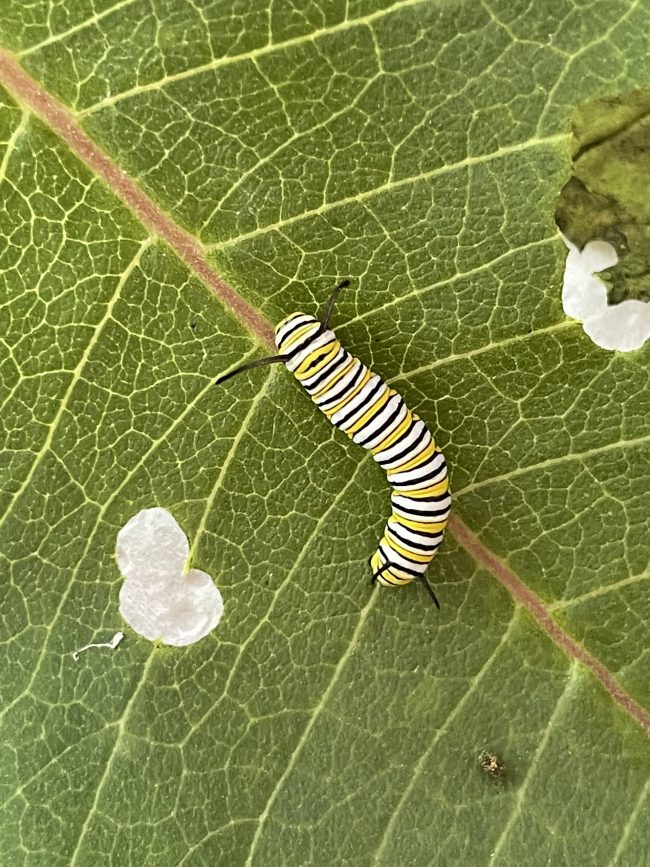
How to care for eggs and caterpillars
Tear off the leaf of the milkweed plant where the egg or caterpillar is and put it in a container. The container does not need air holes. Put a paper towel down as the base and the leaves on top. Mist the leaves and towel with water every other day. Don’t place the container in direct sunlight.
The caterpillars can range in size from tiny to large and ready to make a chrysalis. If the caterpillars are still small, you can keep them in the container with fresh milkweed until they’ve grown large enough to transfer into a net cage.
Sharon keeps her butterfly containers on the screened-in porch, which allows them to experience natural temperatures and night and day cycles.
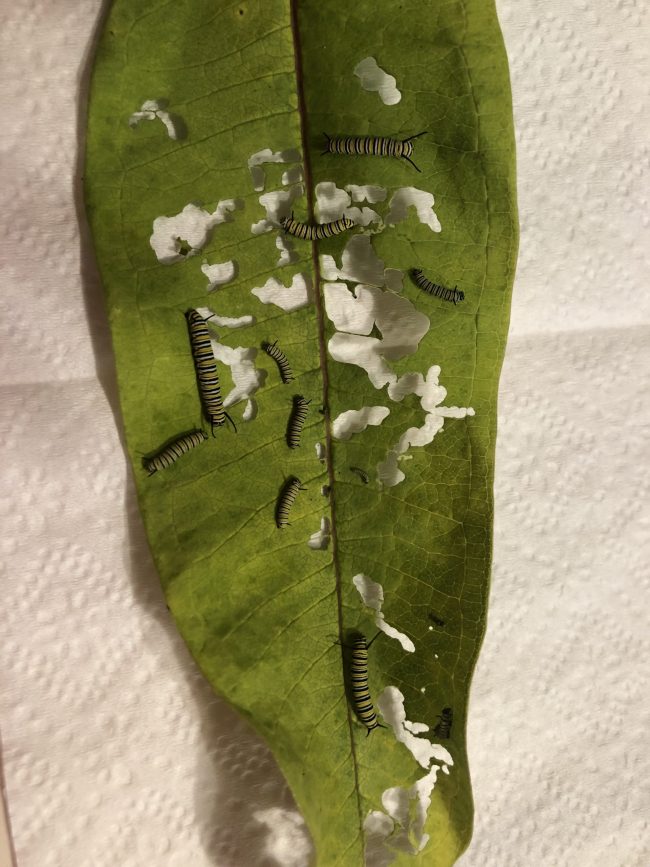
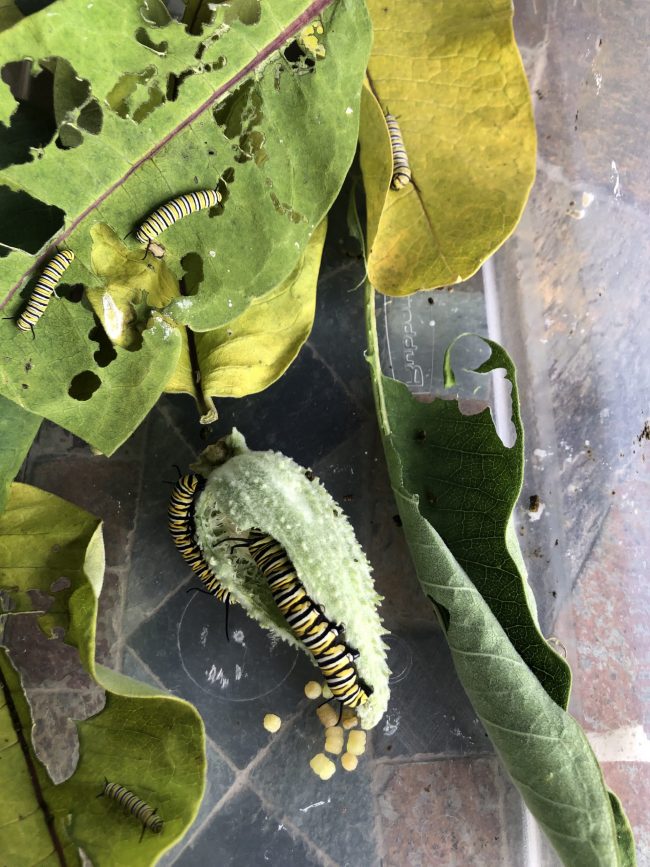
Creating a net cage for your monarch butterflies
When your caterpillars are big enough to make their chrysalises, you’ll want to put them into a tall, net cage. You can make your own net cage using netting, carboard for the top and bottom, string to hang the cage, clothespins to keep them from escaping, and an empty milk jug. Add a long stem of milkweed in the center of the cage and cut a hole in the cardboard at the bottom so that the milkweed can absorb water from the milk jug below.
The caterpillars will usually climb to the very top and make their chrysalises on the cardboard ceiling, but they may also make them on a leaf. Once they move toward the top of the cage, they will curl into the shape of a letter J. Then they’ll become a chrysalis, where they’ll remain for 10 to 14 days before emerging as a butterfly.
You can find many instructions for how to make a butterfly cage online, from the simple, with paper plates and netting, to fancy, with lumber and screens.
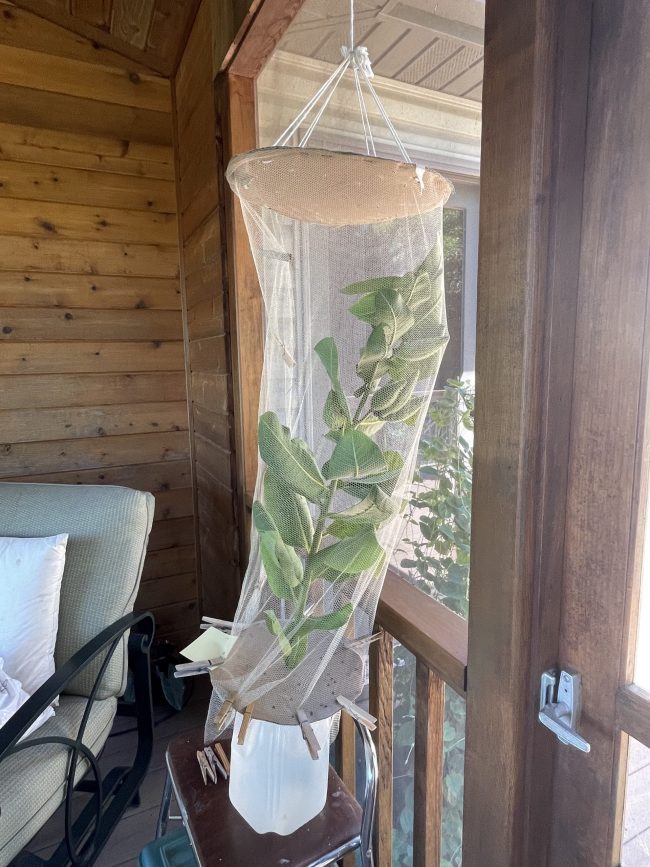
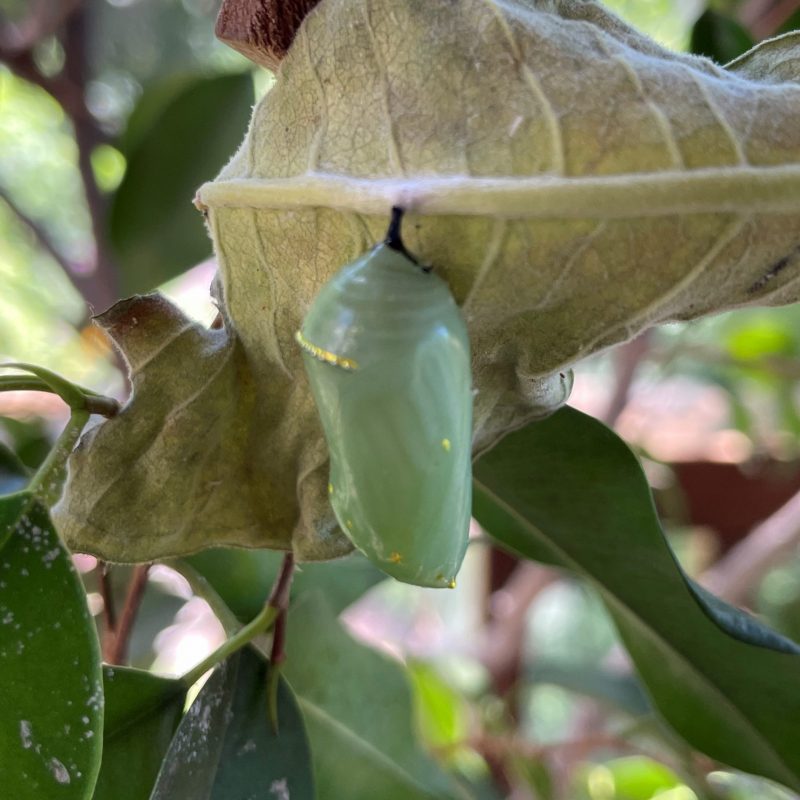
When the monarch butterflies emerge
With any luck, your monarch butterfly will emerge from its chrysalis in a week or two. You should keep them inside the net for about three hours after emerging or until their wings are dry. Predators are most likely to get the butterflies soon after they emerge from the chrysalis, when they can’t yet fly. Once you’ve released them, hopefully they’ll begin their journey of migration. A butterfly lives about two to six weeks. Sharon says:
My favorite part is releasing them after I have watched them progress from a caterpillar to a chrysalis to a beautiful butterfly. I feel like I am doing a small part to help the environment, and maybe to help preserve the monarch species.
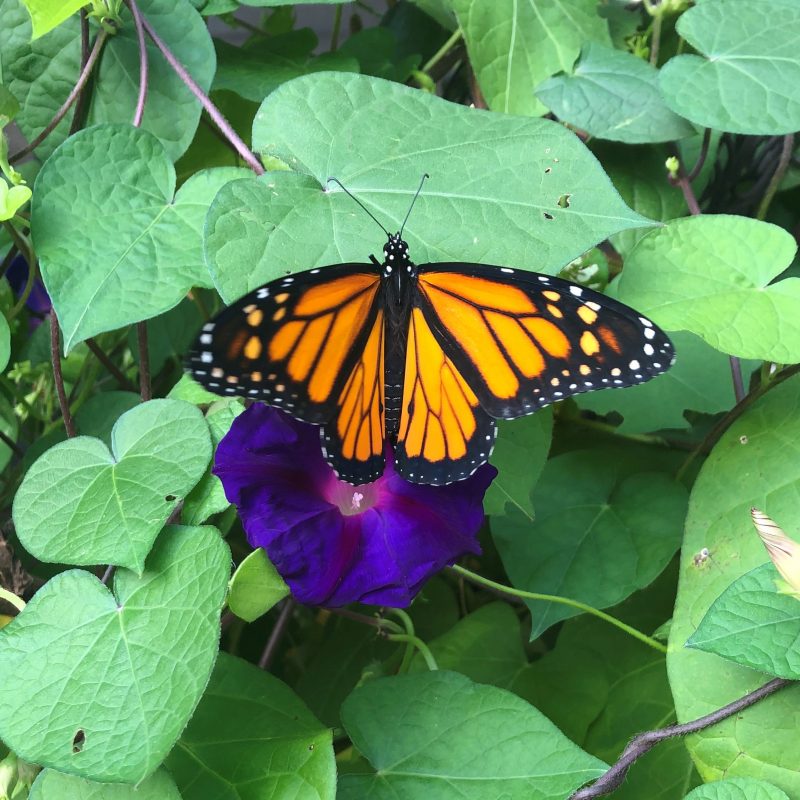
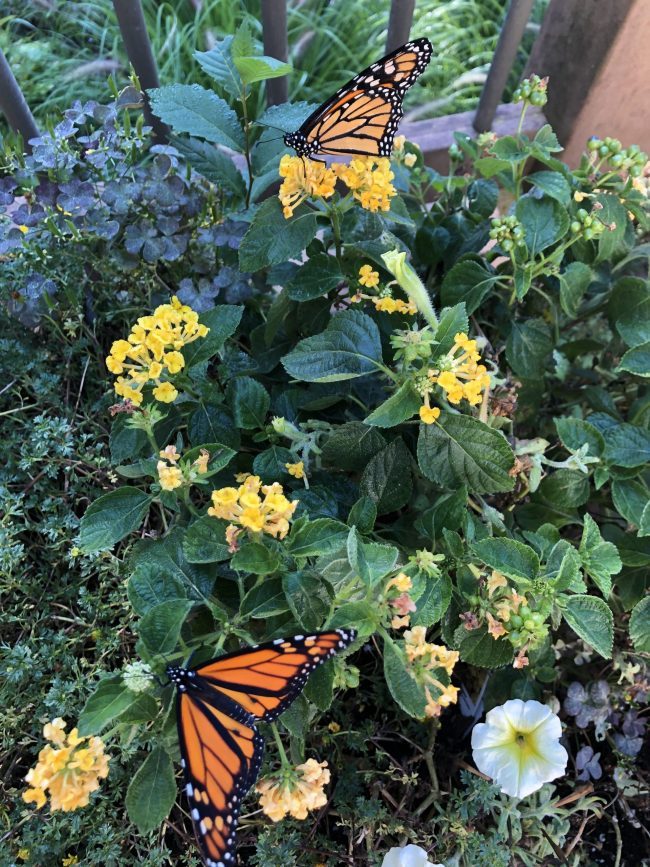
Bottom line: Monarch butterflies face many predators on their way from egg to butterfly. You can help to safely foster them on their journey.
The post Raising monarch butterflies for release first appeared on EarthSky.
0 Commentaires